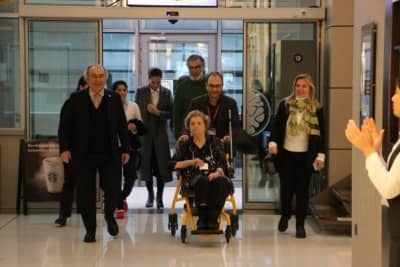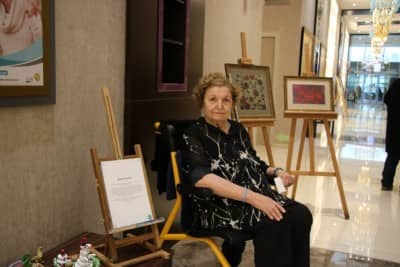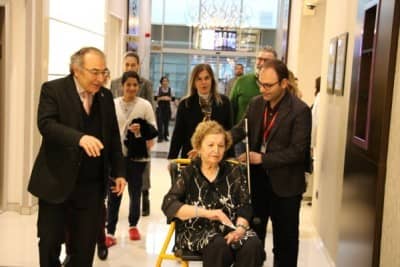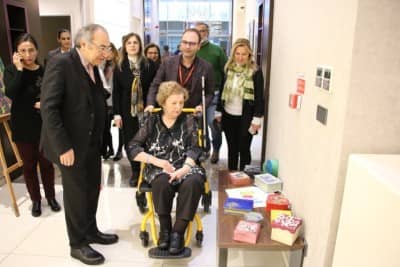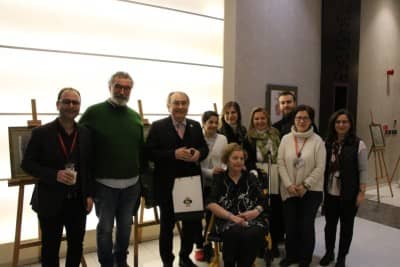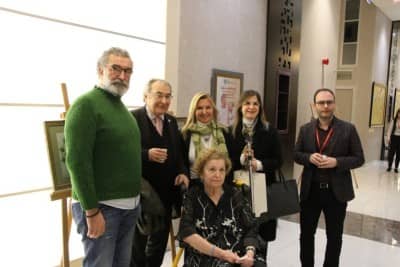Contents
Occupational Therapy and Sensory Integration Center
About the Department
Occupational therapy, which aims for individuals to become maximally independent individuals, provides personalized applications. It deals with all age groups from 7 to 70. It carries out activities to provide individuals with their own self-care and skills in the direction of self-actualization.
It uses meaningful and purposeful activities to promote the greatest possible functional independence for children living with the effects of illness, injury, birth defects, disability or developmental delay.
Treatment is planned for children aged 3 months to 15 years. The focus of the pediatric clinic is to enable children to achieve greater success in activities that are meaningful to them. This may include increased independence in personal care tasks such as eating or dressing, increased ability to play with age-appropriate socialization skills, learning to write more legibly, strategies for learning to stay calm and adapting to everyday life.
Occupational therapists determine the sensory problems of individuals with sensory problems with clinical evaluations after applying a number of tests, and the therapy program is determined with a broad evaluation by analyzing the information received from other specialties and the information received from the family.
Depending on the proximity of the individuals to the therapy (socialization) and the severity of the disorder, the therapy process is progressed in regular rhythms per week. In cases where the disorder is high, an intensive therapy program is organized, while the session interval is increased according to the state of recovery and continued at the control level.
Disease Groups in which Occupational Therapy and Sensory Integration are used;
- Sensory Integration Disorder
- Attention Deficit and Hyperactivity Disorder (ADHD)
- Autism
- Cerebral palsy
- Down Syndrome
- Developmental delays
- Fine and gross motor dysfunction
- Mental Disabilities
- Psychosocial disorders such as
Health is not only the absence of disease and disability, but also a state of complete physical, mental and social well-being. In case of impaired health, it works with many disease groups in order for the individual to reach the maximum degree of well-being.
There are therapy areas with activity workshops, which are mostly activity areas for adult individuals. These are; marbling workshop, handicraft workshop, ceramic workshop, painting workshop, gym and kitchen workshop. In these areas, therapy processes are followed with our specialist (occupational therapist). With the pediatric patient group between the ages of 3 months and 15 years, services are provided to pediatric patients in the sensory integration clinic. Studies are carried out for many specific problems such as sensory problems, motor functions, distractions, behavioral problems, academic problems in children. The therapy area prepares the environment for children to exhibit many functions or to reveal the situations they have avoided or the situations in which they are better.
Occupational therapy is applied in all problems that children experience in daily life. These seem to be small, but it deals with situations that prepare the ground for other underlying disorders or situations that may arise with the growth of the future age. For this reason, a wide analysis is made by a specialist by addressing the child's problem.
For example; a child with clumsiness or constant falls may have a sensory problem in motor movements or depth perception? Children who avoid bathing or dislike shaking hands may have sensory problems. In such cases, when the situation is not analyzed by a specialist, they have difficulty in participating in the social environment, which we call social isolation in the future. This situation not only affects their communication with their environment but also prevents them from expressing themselves as their speaking skills remain weak.
As can be understood from the example, in case of abnormal movements and behaviors experienced in the early period, information can be obtained about the situation by seeing an occupational therapist and problems that may occur in the future can be prevented.
Occupational therapy activities play a supportive or complementary role in the treatment of individuals. Therefore, it works together with many specialties in the field of multidisciplinary work. These are; Neurology, psychiatry, psychology, speech-language pathology, orthopedics, surgical specialties. For example, a child who needs speech therapy must first be able to control himself/herself and participate in the therapy efficiently. In individuals who have only an auxiliary individual who does not stay in place, after sensory integration therapy is applied, it is possible to get faster and more efficient results if they continue to work together by continuing speech-language therapy after receiving some commands and ensuring that they can remain calm.
Since many specialties are together in our hospital, faster and more efficient results can be obtained due to the high level of communication between the specialties, and they can be followed up in the best way. In our hospital, where brain imaging techniques are at an advanced level, more advanced applications can be applied with the help of psychiatry and neurology services to follow evidence-based and systematic developments.
- Occupational therapy assessment
- On-site ergonomic assessment and consultation
- Special treatment programs to increase the ability to perform activities of daily living
- Adaptive equipment recommendations and training
- Guidance for family members and client caregivers
In our hospital, recreational occupational therapy activities including music, painting, handicrafts, ceramics, sports, kitchen and marbling art are carried out in order to reduce the pathologies of the clients, to help them maintain their health and socialize, to help them develop their self-confidence, various skills and abilities, to encourage them to use these skills and abilities in daily life, and to raise their awareness that making efficient use of their free time will improve their quality of life.
When people are mentally and physically busy with a job, when they give all their attention to the work they are doing, they naturally experience a relaxation, they live in the moment, so it is important to evaluate free time with different activities. Artistic and sports activities are also used as a means of communication, and often the result is a sense of de-stress, detachment, purification and renewal.
Creativity is supported in therapies with music, painting and marbling because creativity is the ability to solve problems and create new ideas, to look at the same thing as others but to see something different and to create a new product, to ask questions, to be brave, to think differently, to use different techniques to solve problems and to have a high imagination. For these reasons, creativity is important in complex societies full of problems.
People cannot develop themselves if they cannot be nourished by art. Art is a stage in the interaction of man and nature. It has a social character. Art is a phenomenon that humanizes life. Art can be used to create and strengthen the boundaries of the personality, to establish connections between internal experiences and external reality. One of the methods of therapy is to allow patients to reflect their problems outwardly through painting, to talk about their paintings and to help them relax.
Our interests can be music, painting, sports, dance, photography, ceramics, model making, reading books, gardening, poetry, writing stories, cooking, sewing, handicrafts, these pursuits allow us to get away from daily work, hustle and bustle, do something for ourselves, take a break to relieve the tiredness and tension of the day.
The sensory systems are the information gateways of the brain and the body. Our senses make it possible to learn about the world around us. The brain must understand a variety of sensory information from the body and the environment in order to respond to events, pay attention, learn, teach, plan and organize. This process is called "sensory integration".
For most people, sensory integration develops naturally through normal childhood activities. For some people, sensory integration does not develop as efficiently as it should, arguing that how a child responds and interacts with the environment and other people in their environment is not as efficient as it should be.
For example, some people cannot hear well if they cannot see sound sources clearly. In other cases, seeing something moving, such as a train, makes people feel that they are moving.
Children who have difficulty processing sensory information:
- Fidgety,
- Slow to learn new motor skills,
- He becomes sensitive to clothes,
- It should be described as "smart but lazy".
- Creating Effective Intervention,
Occupational therapists working in the field of pediatrics use their knowledge of sensory integration during treatment to address the underlying sensory and motor foundation that helps a child learn new skills more easily. Our approach is individualized to each child and the functional needs of the family. We explain our observations of children's strengths and challenges so that family members can uncover how the child's sensory input processing difficulties affect activities in daily life and create an individualized treatment plan.
When parents and therapists work together, the treatment process continues to be effective as each child gains new insights that lead to a better understanding of each child and more effective intervention and adaptation to daily life.
Sensory Integration Disorder (SID, also called sensory processing disorder) is a neurological disorder that causes difficulties processing information from the five classical senses (sight, hearing, touch, smell and taste) or the sense of movement (vestibular system) and/or the sense of position (proprioception). For those with SID, sensory information is received normally but perceived abnormally. This is not the same as blindness or deafness. Because unlike these disorders, sensory information is perceived by people with SID, but the information tends to be analyzed by the brain in a way that is unusual, causing distress or confusion.
SID can be a stand-alone disorder, but can also be a feature of other neurological conditions such as Autism Spectrum Disorders, dyslexia (reading difficulties), developmental dyspraxia (movement planning disorder), speech delays and others.
This condition is usually diagnosed by an occupational therapist. Diagnosis is obtained from specialist doctors such as developmental pediatricians, pediatric neurologists.
Sensory Processing Disorder is used as a universal umbrella term with three main diagnostic groups that include all forms of this disorder:
Type I - Sensory Modulation Disorder,
Type II - Sensory-Based Motor Disorder,
Type III - Sensory Discrimination Disorder,
Type I - Sensory Modulation Disorder (SMD): Over- or under-responsiveness to sensory stimuli or seeking sensory stimulation. This group may include fear and/or anxiety-producing pattern, negative and/or persistent behaviors, attachment to self-absorptive behaviors, or difficulty in creatively or actively seeking sensation.
Type II - Sensory Based Motor Disorder (SBMD): Indicates motor output that is dysregulated as a result of faulty processing of sensory information.
Type III - Sensory Discrimination Disorder (SDD): Difficulties with sensory discrimination or postural control and/or dyspraxia (movement planning disorder) are seen in inattention, disorganization, poor school performance.
Sensory integration disorders vary between individuals according to their characteristics and intensity. Some may be mildly disturbed, with little noticeable discomfort, while others may be extremely disturbed, having problems with daily functioning. While occupational therapy sessions focus on increasing a child's ability to tolerate a variety of sensory experiences, both the activities and the environment should be assessed for a "right" fit for the child. Parents can help the child by recognizing that play is an important part of the child's development. Therapy involves working with an occupational therapist and engaging the child in activities that provide vestibular, proprioceptive and tactile stimulation. Therapy is individualized to meet the child's specific needs for development. Emphasis is placed on automatic sensory processes during goal-oriented activity. Children are engaged in therapy through play, including activities such as finger painting, using Play-Doh modeling clay, swinging, playing in rice or water cans, climbing, etc.
Sensory Integration Therapy is based on four basic principles:
1) Just the Right Challenge (the child must successfully fulfill the challenges presented through fun activities)
2) Adaptive Response (the child adapts their behavior with new and useful strategies in response to the challenges presented)
3) Active participation (the child will want to participate because the activity is fun)
4) Child-directed (the child's preferences are used to initiate therapeutic experiences in the session).
Children with lower sensitivity (hyposensitivity) may be exposed to strong sensations such as stroking, vibrations or rubbing with a brush. Play can include a range of materials to stimulate the senses, such as dough or finger painting.
Children with higher sensitivity (hypersensitivity) may be exposed to quiet activities such as quiet music and gentle rocking in a low-lit room. Treatments and rewards can be used to encourage children to tolerate activities they would normally avoid.
"Sensory Integration" Treatment in Autism
Sensory problems are prominent among the symptoms seen in autism. Sensory problems reduce the individual's harmony with the environment and prevent him/her from exhibiting appropriate behaviors. It reduces the individual's adaptation to life, prevents him/her from showing daily life skills, makes it difficult for him/her to achieve academic learning and has problems in self-care. With the integrative approach of sensory integration therapy, the individual's behavior improves and it can help to ensure the formation and control of the self. It provides treatment support in minimizing the specified problems. For detailed information: https: //npistanbul.com/otizmde-duyu-butunleme-tedavisiPlease visitour page.


